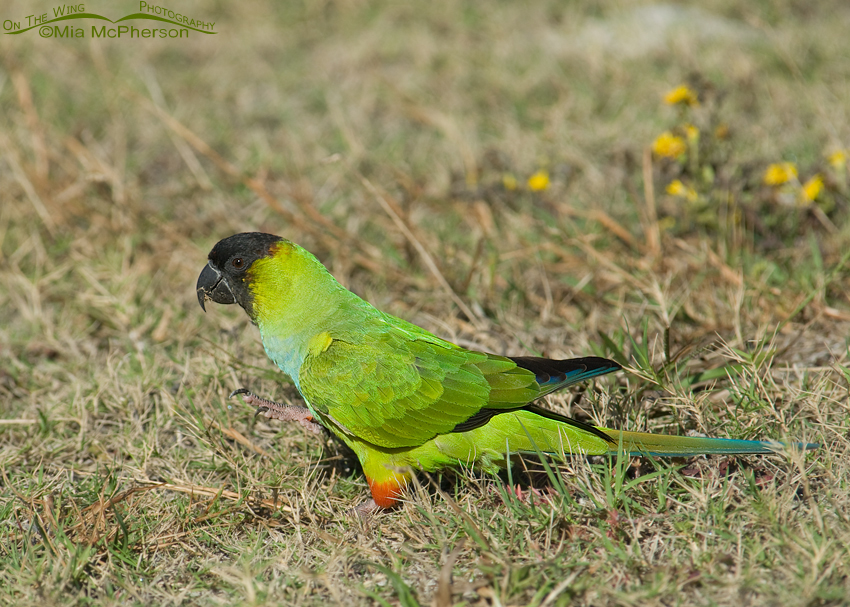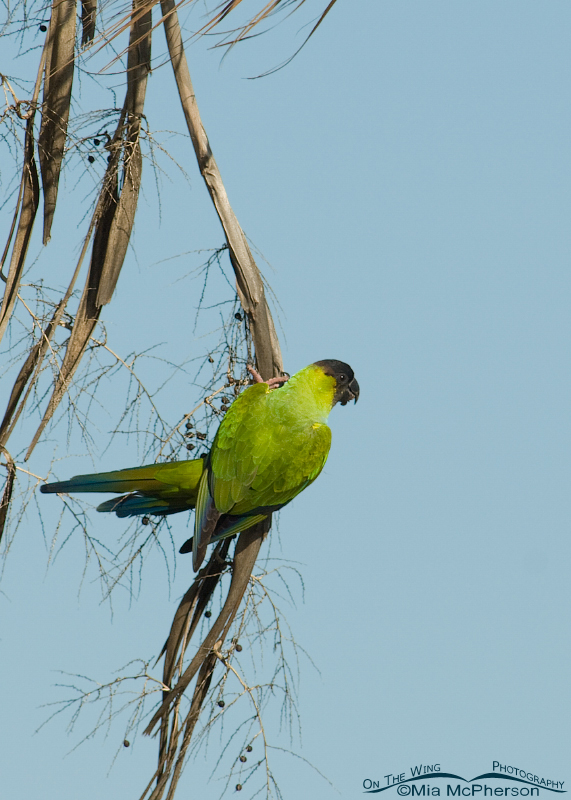 Black-hooded Parakeet eating a sandspur – Nikon D200, handheld, f7.1, 1/640, ISO 200, Nikkor 80-400mm VR at 400mm, natural light
Black-hooded Parakeet eating a sandspur – Nikon D200, handheld, f7.1, 1/640, ISO 200, Nikkor 80-400mm VR at 400mm, natural light
If you have never seen, or worse felt a sandspur buried in your skin you probably won’t know why I loved these Nanday Parakeets (Nandayus nenday) while I lived in Florida as much as I do.
I hate sandspurs.
First, you should know that my feet hate shoes and have since I was just a tiny girl. If weather permits I will be barefoot and if I have to wear shoes then I will put sandals on. I remember before I even started kindergarten in the Midwest that I would walk across the unpaved road in the summer to see my best friend and have my feet get impaled by sand spurs. They really felt like pincushions at times.
In Florida there are grassy areas where sand spurs thrive and if you dare journey through those areas you risk having the sand spurs stuck on your clothing, embedded into the soles of your shoes and jabbing into your skin. If you have never dealt with sand spurs consider yourself very lucky because different species of sand spurs are found throughout North America.
I’ve been stuck by them more times than I care to remember. Plus they have little barbs on the spurs that can make them difficult to remove and at times will leaves the pointed parts in your skin that feel like an annoying splinter.
 Nanday Parakeet in a palm
Nanday Parakeet in a palm
That brings me back to the Nanday Parakeets. Our only native North American member of the parrot family; the Carolina Parakeet, was determined to be extinct by 1939. People have through the years imported parrots and parakeets from other countries and in places like Florida with its warm climate birds that escape from their cages can form large feral colonies.
Nanday Parakeets have formed those colonies in many locations in Florida including Pinellas County. When I’d drive along the road to north beach at Fort De Soto I’d often see them flying in loose flocks.
One afternoon I stopped at the Gulf Pier at Fort De Soto County Park and saw some of the Nanday Parakeets and Monk Parakeets feeding on the ground. I was curious about what it was they were eating and was surprised, actually elated, to see that both species were eating sand spurs that were mixed in with the other grasses!
Any bird that eats those nasty sand spurs is a hero in my book and Nanday Parakeets are one of them. You can just barely see the tan bur in the image of the parakeet above.
Life is good.
Mia
PS: These birds used to be called Black-hooded Parakeets


Beautiful birds, glad to hear sandburs are part of their diet, too!